family
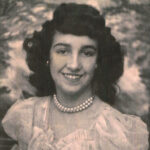
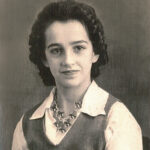 My aunt, Virginia Beadle was one of the sweetest, most kindhearted people I ever knew. She had a quiet voice that spoke volumes. It wasn’t that she spoke so softly that you couldn’t hear, although she did speak softly. Rather, it was the gentleness of her voice. I think that is what people mean when they say “soft-spoken.” A gentle voice that speaks volumes, and that is what Aunt Virginia had.
My aunt, Virginia Beadle was one of the sweetest, most kindhearted people I ever knew. She had a quiet voice that spoke volumes. It wasn’t that she spoke so softly that you couldn’t hear, although she did speak softly. Rather, it was the gentleness of her voice. I think that is what people mean when they say “soft-spoken.” A gentle voice that speaks volumes, and that is what Aunt Virginia had.
Aunt Virginia was an industrious person. She didn’t particularly care for housework and other domestic chores, and one time when her older sister, Evelyn Hushman was allowed to sleep in, because she had been babysitting the fussy baby all night, Aunt Virginia got the idea to ask, “So then if I have a job, you are saying that I won’t have to do housework either?” Well, Grandma Byer, her mom probably didn’t consider the ramifications of her answer, but she told her, “No, you wouldn’t.” With that weapon I. Her arsenal, Aunt Virginia went out and got a job. She had one from that time on, until her retirement. Of course, she also learned that when she got her own home, the “no more housework rule” would go out the window. As a child, you can sometimes get out of housework by getting a job, but when the house is yours and your kids are little, the housework is up to you. Nevertheless, Grandma, being a woman if her word, stood by the words she had spoken that day.
Aunt Virginia enjoyed her job over the years, and it gave her the opportunity to wear nice clothes and be around interesting people. I don’t know if she ever grew to like housework, but she was good at her jobs and she was a snappy dresser too. I was always very impressed by the way Aunt Virginia looked and how successful she was. I suppose everyone has different ideas about things. And for anyone who wants to be a stay-at-home mom, getting a 
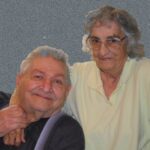 job might not be a great thing, but Aunt Virginia saw it as a way of escaping the housework she didn’t like, and no having her mom mad at her. The money she made also helped her to have the things she wanted, and saved Grandma and Grandpa from having to buy them. It was a win-win of sets, except that Grandma lost some of the housework help. Today would have been Aunt Virginia’s 93rd birthday. Happy birthday in Heaven, Aunt Virginia. We love and miss you very much.
job might not be a great thing, but Aunt Virginia saw it as a way of escaping the housework she didn’t like, and no having her mom mad at her. The money she made also helped her to have the things she wanted, and saved Grandma and Grandpa from having to buy them. It was a win-win of sets, except that Grandma lost some of the housework help. Today would have been Aunt Virginia’s 93rd birthday. Happy birthday in Heaven, Aunt Virginia. We love and miss you very much.
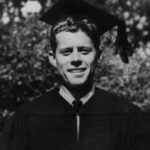
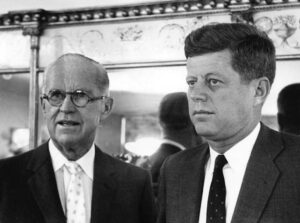 It’s not often that a young man “pulls strings” in order to go to war. Most men would rather not go to war, and some will even try to “pull strings” to get out of going. John F Kennedy, who had some health problems, and an old back injury from his college football days, was turned down for the Navy, but his dad managed to pull some strings for his son, who really wanted to go into the navy. Young was desperate, and like most parents, his father wanted to help fulfill that dream. So in 1941, Kennedy’s politically connected father, Joseph Kennedy used his influence to get his sin, John “Jack” into the service. Of course, Joseph might have been thinking ahead to future political maneuvers when he pushed for a military career for his son. Once in the Navy, Kennedy volunteered for PT (motorized torpedo) boat duty in the Pacific in 1942.
It’s not often that a young man “pulls strings” in order to go to war. Most men would rather not go to war, and some will even try to “pull strings” to get out of going. John F Kennedy, who had some health problems, and an old back injury from his college football days, was turned down for the Navy, but his dad managed to pull some strings for his son, who really wanted to go into the navy. Young was desperate, and like most parents, his father wanted to help fulfill that dream. So in 1941, Kennedy’s politically connected father, Joseph Kennedy used his influence to get his sin, John “Jack” into the service. Of course, Joseph might have been thinking ahead to future political maneuvers when he pushed for a military career for his son. Once in the Navy, Kennedy volunteered for PT (motorized torpedo) boat duty in the Pacific in 1942.
“Jack” Kennedy quickly worked to move himself up in rank, and soon he was Lieutenant John F. Kennedy. July 1943 found Lieutenant Kennedy and the crew of PT 109 in combat near the Solomon Islands. People often think that being in the Navy or the Air Force is somehow safer than the Army or Marines, but the reality is that any position in a war 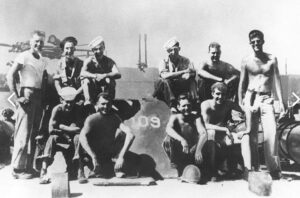
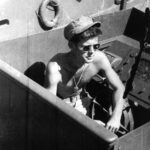 can prove to be dangerous. On August 2, 1943, the middle of the night, Kennedy’s boat was rammed by a Japanese destroyer and caught fire. In the ensuing explosion, several of Kennedy’s shipmates were blown overboard into a sea of burning oil. With no regard for his own life, Kennedy dove in to rescue three of the crew and in the process swallowed some of the toxic mixture. Kennedy always blamed his chronic stomach problems on that incident. The ordeal was not quickly over, and for 12 hours, Kennedy and his men clung to the wrecked hull. Finally, he ordered them to abandon ship. Kennedy and the other good swimmers placed the injured on a makeshift raft. They took turns pushing and towing the raft four miles to safety on a nearby island.
can prove to be dangerous. On August 2, 1943, the middle of the night, Kennedy’s boat was rammed by a Japanese destroyer and caught fire. In the ensuing explosion, several of Kennedy’s shipmates were blown overboard into a sea of burning oil. With no regard for his own life, Kennedy dove in to rescue three of the crew and in the process swallowed some of the toxic mixture. Kennedy always blamed his chronic stomach problems on that incident. The ordeal was not quickly over, and for 12 hours, Kennedy and his men clung to the wrecked hull. Finally, he ordered them to abandon ship. Kennedy and the other good swimmers placed the injured on a makeshift raft. They took turns pushing and towing the raft four miles to safety on a nearby island.
Their ordeal still wasn’t over. For six days, Kennedy and his crew waited on the island for rescue. There was little to eat on the island, but the men survived by drinking coconut milk and rainwater until native islanders discovered the sailors and offered food and shelter. While they waited, Kennedy tried every night to signal other US Navy ships in the area. In addition, Kennedy scrawled a message on a coconut husk and gestured to the islanders to take it to a nearby PT base at Rendova. Finally, on August 8, a Navy patrol boat picked up the survivors of PT-109.
The men were taken to the hospital to recuperate, and on June 12, 1944, while Kennedy was in the hospital recuperating from back surgery, he received the Navy and Marine Corps medal for “courage, endurance, and 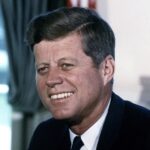
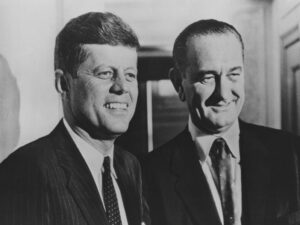 excellent leadership [that] contributed to the saving of several lives and was in keeping with the highest traditions of the United States Naval Service.”
excellent leadership [that] contributed to the saving of several lives and was in keeping with the highest traditions of the United States Naval Service.”
Of course, the rest is history. John F Kennedy went on to become the 35th President of the United States, and on November 22, 1963, Kennedy was assassinated in Dallas. His vice president, Lyndon B Johnson, assumed the presidency upon Kennedy’s death.
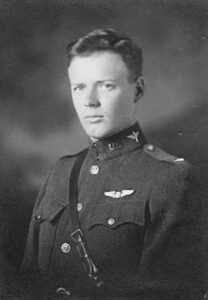
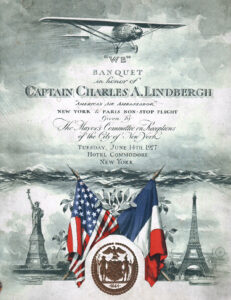 I think most people have heard of Charles Lindbergh, who was born on February 4, 1902, in Detroit, Michigan, was an American aviator celebrated for conducting the first solo, non-stop flight across the Atlantic Ocean. We all like to think about the amazing accomplishments that have marked our history books. When airplanes were invented, there was little chance that records wouldn’t be set and advances made. Man has always tried to improve on things.
I think most people have heard of Charles Lindbergh, who was born on February 4, 1902, in Detroit, Michigan, was an American aviator celebrated for conducting the first solo, non-stop flight across the Atlantic Ocean. We all like to think about the amazing accomplishments that have marked our history books. When airplanes were invented, there was little chance that records wouldn’t be set and advances made. Man has always tried to improve on things.
Lindbergh’s famous flight took place in 1927, when he flew the Spirit of Saint Louis from New York to Paris. The flight took 33.5 hours and made Lindbergh an international hero, but I can only imagine how he felt as he was flying along. He was doing something no one had ever done before!! I suppose there is always that first time for everything new, but Lindbergh had 33.5 hours to think about that.
Fame has a way of giving a person a lot of pull in whatever area they might try to use that influence, and Lindbergh 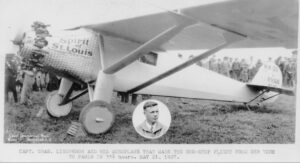
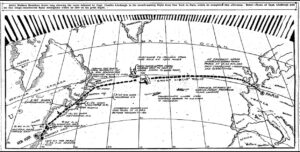 was interested in promoting commercial aviation and air mail services. He was especially instrumental in the development of transatlantic flights, pushing for the establishment of routes and infrastructure that would enable commercial aviation to thrive.
was interested in promoting commercial aviation and air mail services. He was especially instrumental in the development of transatlantic flights, pushing for the establishment of routes and infrastructure that would enable commercial aviation to thrive.
Unfortunately, fame also makes people into targets. For Lindbergh, being a target came in the form of his son, Charles Lindbergh Jr being kidnapped and, while Lindbergh paid the $50,000 ransom, his son was found murdered in 1932, which resulted in what was known as the “Crime of the Century.” Lindbergh’s influence now took a different 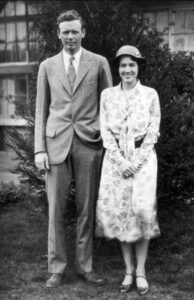
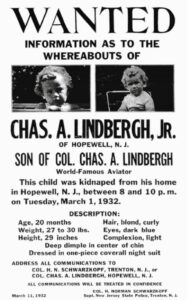 turn, in the form pushing for the Lindbergh Law or Federal Kidnapping Act, making kidnapping a federal crime in the United States.
turn, in the form pushing for the Lindbergh Law or Federal Kidnapping Act, making kidnapping a federal crime in the United States.
While debated by the loss of his son, Lindbergh knew that he must go on…life must go on. He went on to make contributions to various fields, including conservation and literature. He also developed a keen interest in environmental issues and worked with various institutions to advocate for the protection of wildlife and habitats. In addition to those things, he authored several books, including “The Spirit of Saint Louis,” which recounts his historic flight. That book won the Pulitzer Prize in 1954. Charles Lindbergh passed away on August 26, 1974, of Lymphoma at the age of 72.
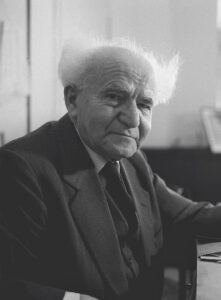
 Since the earliest beginnings of Israel, the Arab community has been protesting its existence and trying to remove it from the face of the Earth. I don’t particularly understand what their problem uis. Given the tiny size of Israel compared to the vastness of the Arab nations, why is it so hard to allow them to live in peace? It is, of course a Holy War situation that is unlikely to go away for as long as time continues.
Since the earliest beginnings of Israel, the Arab community has been protesting its existence and trying to remove it from the face of the Earth. I don’t particularly understand what their problem uis. Given the tiny size of Israel compared to the vastness of the Arab nations, why is it so hard to allow them to live in peace? It is, of course a Holy War situation that is unlikely to go away for as long as time continues.
Israel had been a nation way, way back, but when they were taken into captivity, they were scattered to many nations. Once they were freed, they traveled to Israel (I think most people know the Exodus story). Of course, their existence was fought over again and again, finally leading up to the Holocaust. When World War II ended, many of the Jewish people again moved to and populated the Israeli land, but it wasn’t until May 14, 1948, that David Ben-Gurion, the head of the Jewish Agency, proclaimed the establishment of the State of Israel. United States President Harry S Truman recognized the new nation on the same day. Since that time, there have been multiple wars and continuing conflicts that have threatened the existence of the Israeli state.
One such war was the Six-Day War, also called June War or Third Arab-Israeli War or Naksah. It was a short-lived war that took place from June 5, 1967 to June 10, 1967. It was the third of the Arab-Israeli wars. The first took place almost immediately after they were declared a state. The Israeli people have learned to fight for survival all their lives, vowing never to allow another Holocaust to be carried out. Israel’s decisive victory in the Six-Day War included the capture of the Sinai Peninsula, Gaza Strip, West Bank, Old City of Jerusalem, and Golan Heights. Of course, things didn’t end there. The fact that these territories belonged to Israel has been a major point of contention in the Arab-Israeli conflict sin that time.
The Six-Day War had precursors, as most wars do. Prior to the start of the war, the Palestinian guerrilla groups based in Syria, Lebanon, and Jordan randomly began attacking Israel, basically lobbing missiles at them, leading to costly 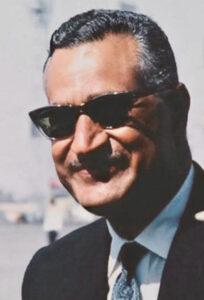
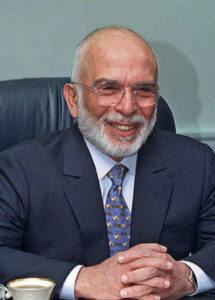 Israeli reprisals. Then, in November 1966 an Israeli strike on the village of Al-Sam in the Jordanian West Bank left 18 dead and 54 wounded, and during an air battle with Syria in April 1967, the Israeli Air Force shot down six Syrian MiG fighter jets. Soviet intelligence reports in May claimed that Israel was planning a campaign against Syria, and although these claims were inaccurate, the accusations further heightened tensions between Israel and its Arab neighbors.
Israeli reprisals. Then, in November 1966 an Israeli strike on the village of Al-Sam in the Jordanian West Bank left 18 dead and 54 wounded, and during an air battle with Syria in April 1967, the Israeli Air Force shot down six Syrian MiG fighter jets. Soviet intelligence reports in May claimed that Israel was planning a campaign against Syria, and although these claims were inaccurate, the accusations further heightened tensions between Israel and its Arab neighbors.
During this time, Egyptian President Gamal Abdel Nasser had come under sharp criticism for his refusing to become involved with Syria and Jordan against Israel. He was accused of hiding behind the United Nations Emergency Force (UNEF) stationed at Egypt’s border with Israel in the Sinai. Under pressure, he moved to unambiguously demonstrate support for Syria on May 14, 1967. Nasser mobilized Egyptian forces in the Sinai on May 18, 1967 and formally requested the removal of the UNEF stationed there. On May 22, 1967, he closed the Gulf of Aqaba to Israeli shipping, thus instituting an effective blockade of the port city of Elat in southern Israel. On May 30, 1967, King Hussein of Jordan arrived in Cairo to sign a mutual defense pact with Egypt, placing Jordanian forces under Egyptian command. Iraq joined the alliance shortly thereafter.
As Israel became aware of the mobilization of its Arab neighbors, early on the morning of June 5, 1967, Israel took preemptive action and staged an air assault that destroyed more than 90 percent Egypt’s air force on the tarmac. A similar air assault incapacitated the Syrian air force. Without cover from the air, the Egyptian army was left vulnerable to attack. The domination in this war became apparent right away, and within three days the Israelis had achieved an overwhelming victory on the ground, capturing the Gaza Strip and all of the Sinai Peninsula up to the east bank of the Suez Canal.
Israel warned Jordan’s King Hussein to stay out of the conflict, but they disregarded the warning, and eastern front was also opened on June 5, 1967, when Jordanian forces began shelling West Jerusalem only to face a crushing 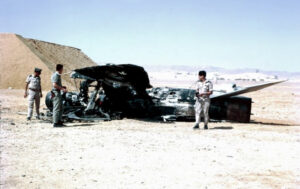
 Israeli counterattack. On June 7, 1967, Israeli forces drove Jordanian forces out of East Jerusalem and most of the West Bank. By June 10, 1967, the war was over and Israel was the obvious winner. It seems to me that the Arab nations should heed the warnings of history, and leave Israel alone, but I suppose that is unlikely. Nevertheless, Israeli land belongs to the Jewish people by the promise of God and they would do well to let it go.
Israeli counterattack. On June 7, 1967, Israeli forces drove Jordanian forces out of East Jerusalem and most of the West Bank. By June 10, 1967, the war was over and Israel was the obvious winner. It seems to me that the Arab nations should heed the warnings of history, and leave Israel alone, but I suppose that is unlikely. Nevertheless, Israeli land belongs to the Jewish people by the promise of God and they would do well to let it go.

 My niece, Kayla Stevens is mom to two beautiful daughters, Elliott and Maya, who arrived just under a year ago, on June 24, 2022. With her husband, my nephew, Garrett Stevens and the girls, Kayla is as happy as she can be!! She and Garrett are living their best life, watching their kids growing up and learning so many new things. Kayla and Garrett really enjoy taking their girls to the park, now that nicer weather has arrived. Of course, Elliott is in a number of activities now, so they all stay pretty busy.
My niece, Kayla Stevens is mom to two beautiful daughters, Elliott and Maya, who arrived just under a year ago, on June 24, 2022. With her husband, my nephew, Garrett Stevens and the girls, Kayla is as happy as she can be!! She and Garrett are living their best life, watching their kids growing up and learning so many new things. Kayla and Garrett really enjoy taking their girls to the park, now that nicer weather has arrived. Of course, Elliott is in a number of activities now, so they all stay pretty busy.
Kayla has always been a kind and compassionate lady. That really makes her perfect for her career as a social worker, working at the Veterans’ Administration. Really, that is a unique  kind of job. Many veterans have been through so much, it helps to have people who understand the stressors, and are there to help with it. Things like PTSD, have become so well known in recent years, but for years veterans, like anyone who is facing something like that, felt like they had no one to turn to. With Kayla’s kind heart they can feel less alone now. I know that the parameters of Kayla’s job have changed over the years, and now she works from home, but that has not stopped the sweetness of this lady from shining through to these people she works with every day.
kind of job. Many veterans have been through so much, it helps to have people who understand the stressors, and are there to help with it. Things like PTSD, have become so well known in recent years, but for years veterans, like anyone who is facing something like that, felt like they had no one to turn to. With Kayla’s kind heart they can feel less alone now. I know that the parameters of Kayla’s job have changed over the years, and now she works from home, but that has not stopped the sweetness of this lady from shining through to these people she works with every day.
I know that her kindness is in a big way, what drew Garrett to Kayla in the first place. Garrett and Kayla were 
 introduced by his sister, Lacey Stevens, but it was Kayla who won his heart. Nothing more was needed, once they met, because they knew that their life was real. Now after being married for eight years and having two beautiful daughters, they are happier than ever. The only sad part for the family here in Casper is that they live in Sheridan, and we don’t get to see them as often as we would like. Nevertheless, Kayla is good about sending us lots of pictures and videos of the kids. That really helps. Today is Kayla’s birthday. Happy birthday Kayla!! Have a great day!! We love you!!
introduced by his sister, Lacey Stevens, but it was Kayla who won his heart. Nothing more was needed, once they met, because they knew that their life was real. Now after being married for eight years and having two beautiful daughters, they are happier than ever. The only sad part for the family here in Casper is that they live in Sheridan, and we don’t get to see them as often as we would like. Nevertheless, Kayla is good about sending us lots of pictures and videos of the kids. That really helps. Today is Kayla’s birthday. Happy birthday Kayla!! Have a great day!! We love you!!
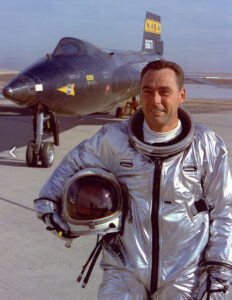
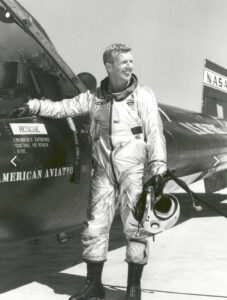 The first official space flight occurred on April 12, 1961, when Soviet astronaut Yuri Alekseyevich Gagarin, a Soviet pilot and cosmonaut who, aboard the first successful crewed spaceflight, became the first human to journey into outer space. Traveling on Vostok 1, Gagarin completed one orbit of Earth on 12 April 1961. While that was the first official manned space flight, there were other times that man touched space.
The first official space flight occurred on April 12, 1961, when Soviet astronaut Yuri Alekseyevich Gagarin, a Soviet pilot and cosmonaut who, aboard the first successful crewed spaceflight, became the first human to journey into outer space. Traveling on Vostok 1, Gagarin completed one orbit of Earth on 12 April 1961. While that was the first official manned space flight, there were other times that man touched space.
The North American X-15 was an experimental US single seat rocket powered airplane that was taken aloft by a B-52 bomber acting as its “mother ship” and released to test extremely high speed and extremely high-altitude flight. The first such flight took place on June 8, 1959.
The hypersonic rocket-powered aircraft known as the North American X-15, was operated by the United States Air Force and the National Aeronautics and Space Administration as part of the X-plane series of experimental aircraft. While it didn’t exactly go into space, the X-15 set speed and altitude records in the 1960s, reaching the edge of outer space and returning with valuable data used in aircraft and spacecraft design, making it a precursor to the spacecraft of today. The X-15’s highest speed, 4,520 miles per hour , was achieved on October 3, 1967, when William J Knight flew at Mach 6.7 at an altitude of 102,100 feet or 19.34 miles. This set the official world record for the highest speed ever recorded by a crewed, powered aircraft, and it remains unbroken to this day.
While pilot, William Knight flew an all-time record speed of Mach 6.7 (4520 miles per hour), the fastest speed flown by a powered and manned piloted aircraft, in 1967, his flight wasn’t the first record setting flight in the X-15. This incredible speed was not even close to the maximum potential of the X-15. A typical commercial passenger jet flies at a speed of about 460 – 575 miles per hour, when cruising at about 36,000 feet, which figures to about 75-85% of the speed of sound. I can’t imagine going any faster than that, much less wrap my head around more than 4520 miles per hour!!
In 1963, pilot Joe Walker flew his X-15 into the history books by flying it to a record altitude of 67 miles and achieving a speed of almost Mach 5 (3794 miles per hour). While there is no sharp physical boundary that marks the end of atmosphere and the beginning of space, it is generally marked at the Karman line, and for purposes of space flight defined as an altitude of 60 miles, although some place the line at 50 miles above Earth’s mean sea level.
The X-15 program continued until 1968, when the rocket planes were retired. On notable pilot was Neil Armstrong, who was also the first man to walk on the Moon, of course. Armstrong made 7 flights in the speedy rocket plane. Also interesting to note is the fact that during the X-15 program, 12 pilots flew a combined 199 flights. Of the 12 pilots, 8 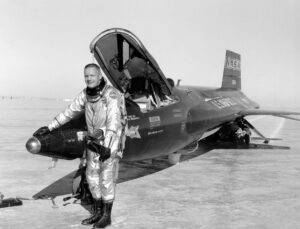
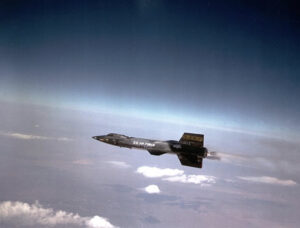 pilots flew a combined 13 flights that exceeded the altitude of 50 miles, thus qualifying these pilots as being astronauts!! Of those 13 flights, two (flown by the same civilian pilot) met the FAI (Féderátion Aéronautique Internationale) definition of 62 miles of outer space. The 5 Air Force pilots qualified for military astronaut wings immediately, while the 3 civilian pilots were eventually awarded NASA astronaut wings in 2005, 35 years after the last X-15 flight.
pilots flew a combined 13 flights that exceeded the altitude of 50 miles, thus qualifying these pilots as being astronauts!! Of those 13 flights, two (flown by the same civilian pilot) met the FAI (Féderátion Aéronautique Internationale) definition of 62 miles of outer space. The 5 Air Force pilots qualified for military astronaut wings immediately, while the 3 civilian pilots were eventually awarded NASA astronaut wings in 2005, 35 years after the last X-15 flight.

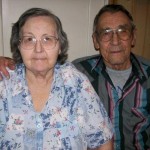 It isn’t often that a couple is together all their lives, but really, that is the case with my in-laws, Walt and Joann Schulenberg. Their parents, or really, their moms were best friends. Walt’s mom, Vina née Leary Schulenberg (later Hein) had two children…Marian in 1927 and Walt in 1929. Joann’s mom, Nettie lost a son, William in 1929, and then went on to have Joann in 1931. I’m not sure exactly when their friendship began, but by the time Joann was born, Vina and Nettie were friends. In fact, that is how Walt and Joann “famously” slept…well napped…together when he was two and she was an
It isn’t often that a couple is together all their lives, but really, that is the case with my in-laws, Walt and Joann Schulenberg. Their parents, or really, their moms were best friends. Walt’s mom, Vina née Leary Schulenberg (later Hein) had two children…Marian in 1927 and Walt in 1929. Joann’s mom, Nettie lost a son, William in 1929, and then went on to have Joann in 1931. I’m not sure exactly when their friendship began, but by the time Joann was born, Vina and Nettie were friends. In fact, that is how Walt and Joann “famously” slept…well napped…together when he was two and she was an 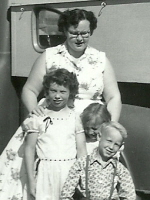 infant. I think that story is sweet, but my mother-in-law was always more than a little bit embarrassed, whenever the subject came up.
infant. I think that story is sweet, but my mother-in-law was always more than a little bit embarrassed, whenever the subject came up.
Of course, they weren’t a “couple” all those years, and in fact, my mother-in law once told me that for a number of years she absolutely did not like my father-in-law in the slightest little bit, but eventually, he grew on her and they started dating. My father-in-law was a very likable guy, so it doesn’t surprise me that she started to like him as time went on. He has a wonderful sense of humor, and while she was a more serious person, his witty personality balanced with her serious one quite nicely.
They went on to have six children and move from Forsyth, Montana to Casper, Wyoming where they raised their family. Like most families, it was a “job market move” that brought them to Casper. My mother-in-law was a stay-at-home mom, and my father-in-law worked at Pathfinder Mines as a mechanic for many years.
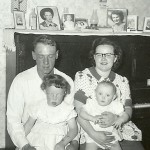
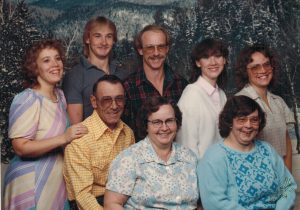
Theirs was a long and happy marriage, lasting 64 years before my father-in-law went home to Heaven. I was blessed to marry into this family, and to know these two wonderful people. In fact, anyone who knew them would tell you what a wonderful blessing they were. Dad went home to Heaven in May 5, 2013, and Mom went home on January 4, 2018. We miss them both very much. Happy anniversary Mom and Dad Schulenberg. We love you very much.
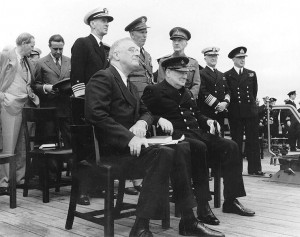
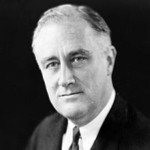
 In a military operation, especially as part of a war, absolute secrecy is vital. Those involved with the planning have to know that they can trust everyone who is around them. One of the most important operations of World War II was the D-Day attack…Operation Overlord. Success was vital, and failure was simply not an option, no matter how many men were lost. The attack on Pearl Harbor had finally drawn the United States into World War II, and now we were in it to win it.
In a military operation, especially as part of a war, absolute secrecy is vital. Those involved with the planning have to know that they can trust everyone who is around them. One of the most important operations of World War II was the D-Day attack…Operation Overlord. Success was vital, and failure was simply not an option, no matter how many men were lost. The attack on Pearl Harbor had finally drawn the United States into World War II, and now we were in it to win it.
The success of any mission is found in the planning, so in August 1943, Franklin D Roosevelt and Winston Churchill met in Quebec for the first of two meetings code-named “Quadrant.” Technically, the meeting was the first of two “Quebec Conferences.” The meetings couldn’t even officially talk about the name of the actual operation, “Operation Overlord, which was later known as D-Day to the world. The Americans and the Brits had differences of opinion as to just how the operation was to be handled, but in order to make this operation work, they would have to be in complete agreement, and the mission would have to be kept completely covert!! No one could know the details.
Everyone, from the top men down to the paper supplier was screened to make sure of their loyalties. No stone was left unturned. If any information was leaked, thousands of men could die, and the fate of the world could have been severely compromised. Nevertheless, something was “missed” somehow. A young Canadian named Émile Couture was in charge of stationery supplies that fateful day, and in reality, he had no intention of being a traitor or playing any other nefarious part in the leak of information into the operation. Nevertheless, he managed to walk out of those meetings with the tactical plans for the invasions. It wasn’t even accidental…exactly.
Roosevelt and Churchill were excellent strategists, and their very detailed plans were perfectly laid out. The operation was going to be an amazing success. Now, all they had to do was to keep everything secret until the actual day, as yet unnamed, of the operation. The plans included detailed listings of Allied military assets to be used in the landings…the number of planes, combat cars, ships, and ground soldiers. They only had to keep it very quiet, because the leak of this information could have turned the tide of the war in favor of the Axis powers, and had that happened, our world would be vastly different even from the strange world we are experiencing today. Sergeant Major Émile Couture had been tasked with cleaning up after the meetings and instructed to make sure nothing was left behind.
Couture was doing his job in a meticulous fashion, but while cleaning an office on the third floor of the hotel, he discovered a leather portfolio that was inscribed “Churchill-Roosevelt, Quebec Conference, 1943. Maybe he thought it was just an empty portfolio, and so thought he could actually have an amazing souvenir of such a monumental meeting. Just think of the stories he could tell his children and grandchildren about the time he got to help out with such an important meeting between two of the most important men if his time. History doesn’t really tell us what he was thinking, but he decided to keep the portfolio as a souvenir without realizing what was actually in the portfolio. 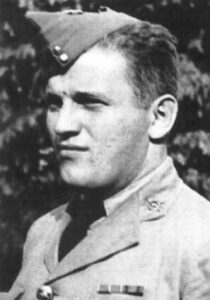 Couture walked out of the Château Frontenac without anyone being any the wiser and drove to the cottage where he was living with his cousins in Lac-Beauport just a few miles outside of Quebec City. Then he took time to examine his “treasure” only to find that he could actually be tried for treason. Couture was more than frightened. He was terrified, and he hid the files under his mattress overnight.
Couture walked out of the Château Frontenac without anyone being any the wiser and drove to the cottage where he was living with his cousins in Lac-Beauport just a few miles outside of Quebec City. Then he took time to examine his “treasure” only to find that he could actually be tried for treason. Couture was more than frightened. He was terrified, and he hid the files under his mattress overnight.
In the morning, knowing that he would have to face the music, he took the portfolio and its files to his superior, Brigadier Edmond Blais. Blais told Couture to go home and wait. He would be dealt with in the morning. Couture could have been put in prison for the remainder of the war in order to make certain that he did not leak the information he had seen. He was, after all, a low-ranking soldier, and shouldn’t have access to such top-secret information. Instead, he was sent home after being questioned by Scotland Yard and the FBI.
Whether Couture was terrified to say anything, or just an honorable soldier, he never leaked the information he had seen. Blais must have liked Couture, because he sent a letter on August 28, 1943, in which he recommended the Sergeant Major Émile Couture be awarded “the greatest accomplishment that can be given an NCO (non-commissioned officer).
On June 6, 1944, the Allies staged the largest amphibious military landing in history. Always remembered as D-Day, Operation Overlord saw 150,000 troops hit the beaches of Normandy, push back the German army and set the course for the eventual victory of the Allied forces. The secret of D-Day was kept, and the operation went off without a hitch.
Couture was rewarded for his discretion during a ceremony in September 1944, when he was commended for his actions by being granted a British Empire Medal. During the ceremony, there was no mention of what Couture had actually done to merit the award other than “services rendered.” I wonder if anyone thought that odd. Nevertheless, they really couldn’t tell, because it would have been embarrassing to the military for the public to see how easily someone walked out of the hotel with top secret documents.
Couture’s daughter, Anne Couture, insists that her father never told anyone. But someone did leak the story, and Couture became the center of the media’s attention. He gave several interviews over time, but he never told anyone whose office he had been cleaning when he found the documents or who he thought might have left them there. Though, Anne admits, he may have told her mother. If he did, Georgette Larochelle isn’t telling anyone, and in an effort to clear the record concerning her husband’s involvement in the whole incident. She has turned over all the memorabilia and documentation the family has kept over the years. It has all been donated to the Royal Museum and has been displayed in an exhibit since the 75th anniversary of the 2nd 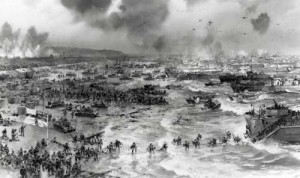
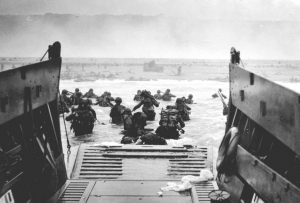 Quebec Conference.
Quebec Conference.
According to the museum’s director and curator, the documents are “convincing and some of the artifacts are considered invaluable” to the museum. He called the personal items which were specially made for the conference, “a great witness of this event of national significance.”
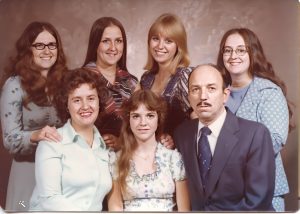
 As I was sitting in church yesterday morning, waiting for the service to begin, I looked around me at the people in the room. Most of them I have known for years…them and their parents. Then, I realized how many of the parents are no longer with us. It has happened over time…one here and one there, until suddenly, my generation was the new patriarch and matriarch generation in the church…the elders if you will.
As I was sitting in church yesterday morning, waiting for the service to begin, I looked around me at the people in the room. Most of them I have known for years…them and their parents. Then, I realized how many of the parents are no longer with us. It has happened over time…one here and one there, until suddenly, my generation was the new patriarch and matriarch generation in the church…the elders if you will.
I felt a wave of sadness, as I thought about my parents, and the parents of so many others who have gone home. Of course, the sadness was accompanied by the joy for each of them, who were now living every day in the presence of God. How glorious that must be!! They left this Earth, as well as their children and grandchildren, hoping that they had given us the training we would need to go forward in life and follow God in the way we had been trained. They left this Earth standing on the promise in Proverbs 22:6, that says, “Train up a child in the way he should go: and 
 when he is old, he will not depart from it.” The people around me had all come up the way I had…going to church with our parents, and so the promise held true.
when he is old, he will not depart from it.” The people around me had all come up the way I had…going to church with our parents, and so the promise held true.
While I was happy that the people around me, were there to carry on their parents’ legacy of raising their own children in the church, I was sorry that so many of our parents and mentors were no longer there with us. Nevertheless, while we aren’t all queens like Esther was, the verse in Esther, 4:14 holds true, “For if you remain silent at this time, relief and deliverance for the Jews will arise from another place, but you and your father’s family will perish. And who knows but that you have come to your royal position for such a time as this?” It occurred to me that while our parents were no longer with us, the truth was that this wasn’t their time in life…it is ours. We were born for this era, and it is up to us to carry on now. It is up to us to make our parents proud of the people we have become, the people they raised. I left church after the service, feeling a little melancholy, but also a little encouraged, because the people around me, who are carrying on with what their parents taught them, are making 
 their parents proud…we all are. And while this era will have its own issues, the fact remains that each era has its own troubles, as the Bible clearly states in Matthew 6:34, “Therefore do not worry about tomorrow, for tomorrow will worry about itself. Each day has enough trouble of its own.” Our parents carried their day, and now it is up to each of us to carry ours, until our era is up, and then, prayerfully, we have trained up the next generation of warriors to take up the tasks of carrying their day.
their parents proud…we all are. And while this era will have its own issues, the fact remains that each era has its own troubles, as the Bible clearly states in Matthew 6:34, “Therefore do not worry about tomorrow, for tomorrow will worry about itself. Each day has enough trouble of its own.” Our parents carried their day, and now it is up to each of us to carry ours, until our era is up, and then, prayerfully, we have trained up the next generation of warriors to take up the tasks of carrying their day.
 The normal hurricane season is from June 1 to November 30, and since we have our first hurricane in the Gulf of Mexico right now, it looks like it’s right on time. Nevertheless, for places like New York, where it is normally a little cooler, the hurricane season starts a little later, and may not really arrive at all. However, on June 4, 1825, a rare early hurricane arrived, moving off the East Coast and tracking south of New York. The hurricane caused several ship wrecks, and killed seven people.
The normal hurricane season is from June 1 to November 30, and since we have our first hurricane in the Gulf of Mexico right now, it looks like it’s right on time. Nevertheless, for places like New York, where it is normally a little cooler, the hurricane season starts a little later, and may not really arrive at all. However, on June 4, 1825, a rare early hurricane arrived, moving off the East Coast and tracking south of New York. The hurricane caused several ship wrecks, and killed seven people.
The National Hurricane Center, states that on average, hurricane winds have impacted the New York City area every 19 years, and major hurricanes, of a Category 3 or higher, only every 74 years. The highest hurricane reading, Category 5 hurricane is not expected to occur there at all, because of the climate conditions there.
Nevertheless, on June 4, 1825, forming ahead of what is now considered hurricane season, a severe tropical storm surprised the Atlantic seaboard from Florida to New York City. At that time, they did not have the prediction capabilities, and this storm was first sighted near Santo Domingo on May 28th. It moved across Cuba on June 1st, with gale force winds, 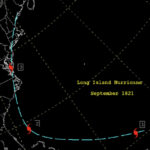 beginning at Saint Augustine, and approaching US soil on the June 2nd, and impacting Charleston, North Carolina on June 3rd.
beginning at Saint Augustine, and approaching US soil on the June 2nd, and impacting Charleston, North Carolina on June 3rd.
The tide in North Carolina rose six feet at New Bern and fourteen feet at Adams Creek. As the tide rushed in, more than 25 ships were driven ashore at Ocracoke, 27 near Washington, and also some at New Bern. The plantations on the coastal areas near the South River were inundated with water, causing a heavy loss of crops and livestock. New Bern experienced heavy damage near the waterfront.
The storm pummeled Norfolk, with horrific force for 27 hours as the storm passed by to the east beginning on the 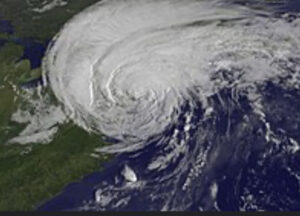 morning of June 3rd. The wind was relentless, uprooting trees as it went. At noon on June 4th, stores on the wharves were flooded in a surge up five feet deep. High winds howled through the Washington DC area. The storm then moved northeast past Nantucket on June 5th.
morning of June 3rd. The wind was relentless, uprooting trees as it went. At noon on June 4th, stores on the wharves were flooded in a surge up five feet deep. High winds howled through the Washington DC area. The storm then moved northeast past Nantucket on June 5th.
The storm reminded many people of the September gale of 1821, except that the September gale would have been much more common. There haven’t been many early June hurricanes in that area since 1825, but there have been a number of hurricanes to hit the area since, including Hurricane Sandy, which did much damage in New York City, including the subway area.

